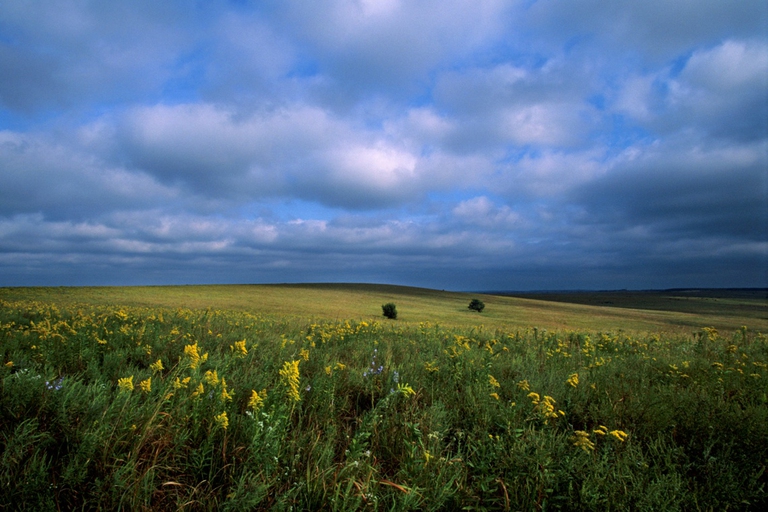
The Amazon became an alternative classroom during the pandemic. Now, the educational forest in Batraja, Bolivia, lives on to teach children and adults the value of nature.
Ethanol, the biofuel made from corn and other plant materials, was once acclaimed as the solution to the United States’ dependence on foreign oil. Yet growing evidence, including a recent study from the University of Michigan, shows how the fuel is not reducing CO2 emissions as previously thought, but is instead contributing to the environmental demise of the American Great Plains,
The mesmerising beauty and abundance of life of the American Great Plains appeared as heaven on Earth to famed 19th century explorers Lewis and Clark. With such rich and fertile soil, the area turned into profitable agricultural land by the late 1800s. Because of the predominance of corn monocultures, a large portion of the Great Plains is also known as the Corn Belt.
Years of abuse, which stripped the soil of its rich components, followed by a severe drought, led to the infamous Dust Bowl disaster of the 1930s, when strong winds picked up the lifeless topsoil causing dust storms that choked cattle and pasture lands. The soil depletion in the area continues to this day, exacerbated by the US government’s increased demand for corn ethanol.
In an effort to reduce both CO2 emissions and America’s dependence on foreign oil, the US Congress passed the Renewable Fuel Standard (RFS) programme in 2005. Also known as the Ethanol Mandate, the programme requires blending up to 10 per cent of biofuel, namely ethanol, into the nation’s petrol supply. While the Environmental Protection Agency (EPA) has the authority to adjust the demand on biofuel production, farmers are growing more corn than necessary, with production estimated to be 14.5 billion bushels in 2016, the largest ever. The mandate has encouraged the destruction of untouched prairie grasslands, with the acreage used for corn production rising more than 15 per cent since going into effect.
EPA Inspector Calls Agency Out On Ethanol Mandate https://t.co/aUT8Uyg8Z1
— Steve Forbes (@SteveForbesCEO) August 31, 2016
Although ethanol has the potential to be a cleaner energy source than petroleum based fuels, several scientists are warning against it. According to a 2014 report by the Intergovernmental Panel on Climate Change, while the use of ethanol in vehicles may result in reduced CO2 emissions, the land used for corn production leads to greater total emissions than using petroleum fuel. In addition, food crops should only be used to feed humans and livestock, not for creating fuel. Since the introduction of the Ethanol Mandate, spikes in fuel demand have often resulted in higher corn prices, affecting consumers, the food industry and livestock farmers.
While in 2000 less than 5 per cent of the US corn crop was destined to the biofuel industry, that number reached over 40 per cent in 2013. Such a sharp increase was obtained through thoughtless deforestation and destruction of native grasslands. Growing corn requires large amounts of water, which is leading to the rapid depletion of groundwater. Corn is also hungry for nitrogen fertilisers, which leach into waterways and out to the Gulf of Mexico, causing death of sea life from oxygen depletion, creating one of the largest Dead Zones in the world.
Research indicates that a more sustainable way to make ethanol is using fast growing grasses requiring less water and fertiliser, and even by fermenting trash into fuel, which reduces the demand for landfills, while cutting greenhouse gas emissions. Also promising is biodiesel created from algae. While progress is being made, these alternative fuels are not yet commercially available and still more expensive to produce than corn ethanol.
Siamo anche su WhatsApp. Segui il canale ufficiale LifeGate per restare aggiornata, aggiornato sulle ultime notizie e sulle nostre attività.
![]()
Quest'opera è distribuita con Licenza Creative Commons Attribuzione - Non commerciale - Non opere derivate 4.0 Internazionale.
The Amazon became an alternative classroom during the pandemic. Now, the educational forest in Batraja, Bolivia, lives on to teach children and adults the value of nature.
Our species took its first steps in a world covered in trees. Today, forests offer us sustenance, shelter, and clean the air that we breathe.
Bangladesh suffered widespread damage as a result of Cyclone Amphan. Yet the Sundarbans mangrove forest acted as a natural barrier protecting the country from further destruction, as it has done countless times before.
On top of a 2.4 million dollar compensation, the indigenous Ashaninka people will receive an official apology from the companies who deforested their lands in the 1980s.
The tapir was reintroduced into Brazil’s Atlantic Forest, the country’s most at-risk ecosystem. The species can play a key role in the forest’s recovery.
Forests are home to 80 per cent of the world’s terrestrial biodiversity. This year’s International Day of Forests highlights the urgent changes needed to save them.
After a legal battle that lasted two years, Indonesia’s Supreme Court has revoked the permit to mine for coal in the forests of South Kalimantan in Borneo.
The list of human and animal victims of the Australia wildfires keeps growing – one species might already have gone extinct – as the smoke even reaches South America.
Areas where the FARC guerrilla used to hold power in Colombia have faced record deforestation. Farmers cut down trees, burn land and plant grass for cows. Because, “what else can we do for a living here in the Colombian Amazon”? An intimate report from the heart of the felled forest in Caquetá.








